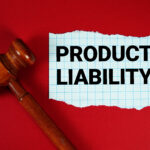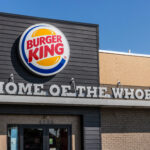The current regulatory and claims environment for products, food and beverage, automobiles, medical devices, and more, is rapidly shifting amid layoffs at the federal level, slowdowns on inspections, and the potential for reduced enforcement.
In response, business leaders are working to stay up to date on policy changes to maintain compliance. However, diligence should remain a top priority to protect their brands and safeguard themselves from litigation. The recall environment has become increasingly litigious, with lawsuits arising from incidents involving salmonella, listeria, and other outbreaks as well as claims alleging false advertising, design defects, or medical monitoring, to name a few.
Related: Sedgwick: European Product Recalls Reach Highest Quarterly Total in 11 Years

Because of this and other factors, it is more necessary than ever that investment be made by companies to ensure that they have a fully developed product lifecycle and recall plan in which each stakeholder, executive, and party understands their role, has clear lines of communication internally and externally, and understands that a failure at any step in the process could result in a diminished brand image and the loss of consumer trust.
Furthermore, there is the potential for an increased number of recall claims if proper diligence is not implemented in all areas, especially as tariffs reshape the supply chain, cost of business increases, and companies manage changes around supplier verification, quality control and protocols and more. In certain areas, such as consumer products, the first quarter saw the number of recalls hit a 14-year high, and the total number of units recalled across all sectors increased by 24.8% from the previous quarter.
International Regulations Remain in Place
Even in the face of an evolving environment in the United States, where leaders and recall experts are watching developments at the Consumer Product Safety Commission (CPSC), FDA, and other regulatory bodies closely, companies with an international footprint still must ensure they are in compliance in countries and areas where rollbacks have not occurred.
This is critical in Europe, where the EU’s General Product Safety Regulation (GPSR), which was put into effect in December 2024, remains in place and applies to all products in the market, regardless of their origin. The GPSR has an expanded scope in terms of product safety in comparison to previous regulations, covering a wider range of products including those sold online. As each part of the supply chain has its own set of compliance standards, including differentiated regulations for importers, distributors, online marketplace providers, and manufacturers, companies that operate in multiple countries will need to make sure proper attention is continued to be paid on this, regardless of changes in the United States.
Related: Sedgwick: Number of Recalled Products in US Rose 25% in First Quarter
Additionally, the GPSR lays out its own recall standards and expectations, including how companies are tasked with assessing if a product is safe depending on its design, features, labelling, appearance, and more. Key here is that even for products that are excluded from the GPSR, there are still legislative arrangements that apply. For companies that must initiate a recall, leaders must understand which regulatory framework they are operating under for the product, which will determine the requirements on timing, obligations for reporting, and which authorities should be notified.
This is all to say that compliance in the international market has not changed, and companies that experience a recall in the EU market should be prepared to also recall their product in the U.S. market, even if is not required. Uniform internal recall standards for companies are essential in maintaining public trust and brand image, especially in the event of a large number of claims Understanding how to best communicate information about recalls in each market is critical, and servicing customers in an efficient manner should be an integral part of all recall claims strategies.
Maintaining Diligence is a Higher Priority Than Efficiency
Even as the evolving regulatory landscape in the U.S. creates a complex and unpredictable risk environment for businesses across the supply chain, diligence should be an integral part of operations moving forward to ensure companies are prepared to navigate the unexpected. With policy shifts continuing, businesses should continue to rely on established and well-practiced recall, claim, and incident response plans, and in turn, avoid the temptation to seek out shortcuts when it comes to the vendor and unit vetting processes.
As enforcement levels go down, companies may look for new avenues to save on costs. For example, a business could work to identify recalls in which they could repair a product, or manufacture a replacement unit, rather than implementing a full-scale recall. With tariffs impacting the supply chain, there has been difficulty in recent months in securing new parts for quick manufacturing turnarounds. Yet, a rushed vetting process can lead to additional difficulties, such as further recall claims if the new part or product does not adhere to proper standards.
Intrinsic to a diligent approach to the product lifecycle and recalls is an understanding among company leadership that regulatory and policy changes should not impact internal operations and communication. Shifts in compliance expectations, enforcement priorities, and the potential for less oversight among federal agencies such as the FDA, USDA, CPSCS, NHTSA, and more, should not change companies’ approach. Diligence and commitment to a fully developed and comprehensive product, recall, and claim process in the face of a changing landscape is one of the most effective tools a company has in maintaining consumer trust, improving brand image, and driving success moving forward.
Topics Legislation Claims
Was this article valuable?
Here are more articles you may enjoy.



 Florida, East Coast to See Big Insured Losses From More Cat 5 Storms, Researchers Say
Florida, East Coast to See Big Insured Losses From More Cat 5 Storms, Researchers Say  Product Liability Verdicts Are on the Rise but There Are Ways to Avoid Them
Product Liability Verdicts Are on the Rise but There Are Ways to Avoid Them  Lawsuit Over Burger King’s Whopper Ads Set Back by Federal Judge
Lawsuit Over Burger King’s Whopper Ads Set Back by Federal Judge  Applied Systems, Comulate Spar Over Trade Secret Theft Allegations
Applied Systems, Comulate Spar Over Trade Secret Theft Allegations 


